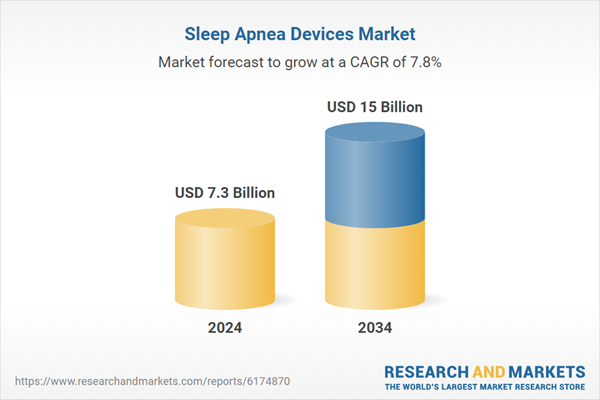This growth is being driven by the rising number of sleep apnea cases worldwide, increased awareness around sleep disorders, and growing demand for advanced, portable treatment solutions. Sleep apnea devices are used both for diagnosing and managing sleep-disordered breathing, helping to keep the airway open and monitor patients’ sleep health effectively. With more individuals recognizing symptoms such as persistent snoring, fatigue during the day, and difficulty focusing, medical consultations and sleep disorder diagnoses are becoming more common. Innovations in sleep testing methods, including lab-based polysomnography and home testing kits, are further contributing to this surge in diagnosis rates. As more patients are formally diagnosed, demand for devices like CPAP, BiPAP, and other sleep apnea treatment technologies continues to rise. These devices are instrumental in reducing the health risks of untreated sleep apnea, offering improved patient care and boosting overall quality of life.
In 2024, the diagnostics segment held a 37.1% share. This growth stems from heightened attention to early sleep disorder detection and greater access to compact and AI-powered diagnostic tools. As these technologies become more sophisticated and affordable, screening for sleep apnea is becoming quicker and more convenient for both patients and providers. The evolution of home-based testing and real-time data analysis continues to enhance diagnostic capabilities and market expansion.
The home care settings and individuals segment held a share of 56.9% in 2024 and is expected to generate USD 8.9 billion by 2034, fueled by the rising demand for cost-effective, long-term treatment solutions outside of clinical settings. Managing sleep apnea at home helps cut down on frequent clinic visits and hospitalization expenses. Expanded insurance coverage for home-based care and the availability of budget-friendly treatment options are helping make home sleep therapy more accessible to a wide population base, encouraging more people to manage their condition independently and affordably.
North America Sleep Apnea Devices Market held a 37.6% share in 2024, supported by robust healthcare infrastructure, a well-established reimbursement ecosystem, and high public awareness around sleep-related health issues. The region continues to see strong early adoption of both therapeutic and diagnostic sleep apnea technologies. Integration of remote monitoring platforms and connected health solutions is further advancing patient care in the region. Major industry players such as Drive DeVilbiss, BMC, ResMed, Teleflex, Fisher & Paykel, and Philips have cemented their position in North America by offering comprehensive portfolios that include CPAP, BiPAP, and remote sleep testing solutions.
Key companies active in the Global Sleep Apnea Devices Market Include Cadwell, DynaFlex, Asahi KASEI, Glidewell, Apnea Sciences, SomnoMed, NIHON KOHDEN, Natus, WEINMANN, and others. To strengthen their position in the global sleep apnea devices market, companies are deploying several core strategies. These include consistent investment in research and development to enhance device accuracy, portability, and patient comfort. Firms are introducing connected technologies that support real-time data monitoring and telehealth compatibility. In addition, partnerships with sleep clinics, home care providers, and insurance networks are helping expand distribution. Marketing initiatives focus on increasing public awareness and encouraging early diagnosis. Moreover, companies are entering new markets through regulatory approvals and building scalable production to meet rising global demand, particularly in home care settings.
Comprehensive Market Analysis and Forecast
- Industry trends, key growth drivers, challenges, future opportunities, and regulatory landscape
- Competitive landscape with Porter’s Five Forces and PESTEL analysis
- Market size, segmentation, and regional forecasts
- In-depth company profiles, business strategies, financial insights, and SWOT analysis
This product will be delivered within 2-4 business days.
Table of Contents
Companies Mentioned
The key companies profiled in this Sleep Apnea Devices market report include:- Asahi KASEI
- BMC
- Cadwell
- Drive DeVilbiss
- FISHER & PAYKEL
- natus
- NIHON KOHDEN
- Philips
- ResMed
- Teleflex
- WEINMANN
- Glidewell
- DynaFlex
- SomnoMed
- Apnea Sciences
Table Information
| Report Attribute | Details |
|---|---|
| No. of Pages | 140 |
| Published | September 2025 |
| Forecast Period | 2024 - 2034 |
| Estimated Market Value ( USD | $ 7.3 Billion |
| Forecasted Market Value ( USD | $ 15 Billion |
| Compound Annual Growth Rate | 7.8% |
| Regions Covered | Global |
| No. of Companies Mentioned | 16 |









